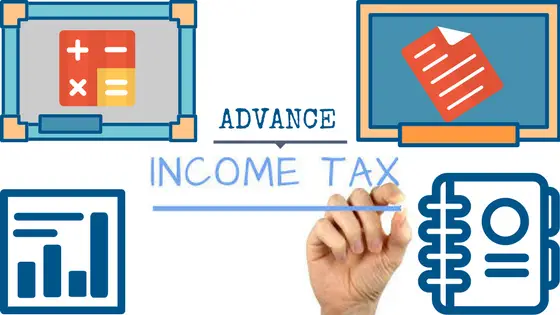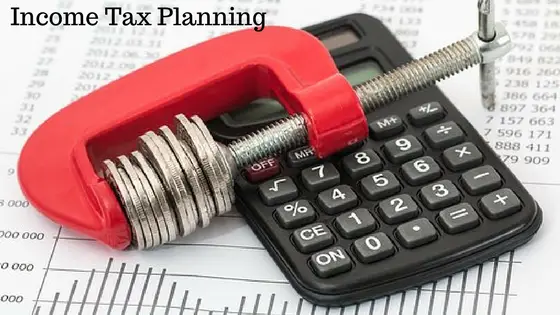The time has come to file the income tax return for the Assessment Year 2019-20 (FY 2018-19). But do you know whether you have to file income tax return or not. Many of us think that I have paid the taxes, so I need not to bother about filing the income tax return? Someone is not a tax payer as the income is below the specified limit. Is it mandatory to file income tax return for them? If someone has more than one income what form should he choose to file the return? These are very common question which are coming to tax payers mind very often. Hence, I have taken this topic “Which ITR form to file AY 2019-20” to clarify the readers.
What is Income Tax Return (ITR):
Income Tax return is a document about the income and tax details that you submit the Government concerned tax authority. Indian Citizens have to file income tax return to the Income Tax Department of the Government of India. If you have paid more income tax, you will get return to your bank account.
Is it necessary to file Income Tax Return?
As it has been discussed earlier that many of us thinks that the income tax return is not mandatory to file when the TDS has been deducted from the account. It is not correct statement.
If the gross taxable income exceeds the basic exemption limit you must have to file income tax return. The basic exemption limit is different for different categories. Rs 2.5 lakh is the basic exemption limit for Individual/ HUF tax payers. Senior citizens (above 60 yrs age) have the limit of Rs 3 lakh and the senior citizens with 80 years old have the limit of Rs 5 lakhs.
Now what is the gross total income? The gross total income is the total income minus your basic exemption such as medical, conveyance, HRA. It is the income before deducting the savings which are tax exempted.
Also Read: Income Tax Planning for salaried employees
Advantages of Filing Income Tax return:
The advantages of income tax return filing which I can see are as per the followings:
- The first requirement is during the home loan application. Banks and NBFCs want the last two to three years IT return for processing the home loan. It is also applicable for other loans such as car loans, personal loans etc.
- ITR filing is required to apply for a credit card. Sometimes credit card companies deny to issue the credit card if you did not file ITR for last two years.
- It can be shown as a proof of income if you require to establish a proof of income to any government department for any other purpose.
- It is mandatory for VISA processing of some countries.
- You can also add up your business losses to carry forward to subsequent year if you file income tax return every year.
- If you avoid the filing of income tax return (even if you have paid the complete income tax ), the department may impose a penalty on you.
What are to be kept handy to file IT return?
The following things need to be kept with you while filing the IT return:
- Form -16: This document is having the salary details and the TDS deducted by your employer. You will get it from your employer. If your employer has not given till now, you specifically ask the HR or concerned department to issue the Form-16.
- Form-16A: This is the statement from different organisation who has deducted tax from you such as banks, financial institutions etc.
- Bank account details: You should be ready with all the bank account details you have. If you have more than one account, you need to furnish the details all the bank accounts. So be ready with account numbers, IFSC code, Branch etc.
- Proof of Investments: The documents for investments and purchase/sell of property need to be kept with you as record purpose. These documents need not be submitted with ITR but in case of verification from Income Tax Department you need to show all the documents.
What form should you use to file ITR?
There are seven forms available in the Income Tax website for filling return. You should know what is applicable for you before filling the return. Many taxpayers omit their capital gains or any other income while filing the return to avoid complicacy or hiding the information. This is not desirable from tax payers.
Here are the following tax return forms and when to use it:
# ITR-1:
This form is for individuals who have income from salaries/ pension, one house property and other sources such as interests, dividends etc (excluding lottery and income from horse race betting). This form is applicable for the total income of Up to Rs 50 lacs. It cannot be used for the following cases:
- Income from more than one house property.
- Income from lottery or horse race
- Taxable Capital gains, if any.
- Agricultural income of more than Rs 5000
- Income from Business
- Income from source which is outside India
- If the total income exceed Rs 50 Lakhs
# ITR-2:
If your income is more than Rs 50 lacs, you have to use the ITR-2 for income tax return filing. This for is applicable in case you have taxable capital gains, foreign income and agricultural income of more than Rs 5000. If you are partner in a farm and do not have any income by means of salary, interest etc., you have to fill up ITR-2 for return filing. If you have income from house property or from other sources including lottery or horse race you have to use ITR-2 for return filing.
You cannot file ITR-2 if you have any income from business/ profession under any proprietorship.
# ITR-3:
The individual/ HUF who has proprietary business or profession fill up this ITR.
# ITR-4 (Sugam):
This form can be used by Individuals/HUF and partnership firms for the assessment year 2017-18. This is applicable for the following cases:
- Business or Profession Income
- Income from Salary/ Pension/ One house property
- Income from other sources excluding the income from lottery or race courses
When you cannot fill up the ITR-4S:
- You have income from more than one house property
- Income from lottery or race course
- Agricultural income of more than RS 5000
- You have capital gains from the sale of property, Mutual funds, stocks etc.
- Income from agency business/ income through commission for brokerage
- Having an asset located outside India/ having income from any source outside india.
# ITR-5:
This form is for LLPs(Limited Liability Partnerships), AOPs (Associated of Persons) and Body of Individuals
# ITR6:
This for is applicable for companies which is claiming exemption under section 11 of income tax rule.
ITR-7:
This form is to be used by the companies or trusts such as research organisation, news agency, educational institution, hospital etc.
Apart from the above, remember the following points while filling up ITR:
- Show the interest received in savings account and fixed deposit. Maximum tax payers don’t show the interest income as it is very less or tax free. The interest earned in savings account more than Rs 10,000 is taxable and the interest from fixed deposit is taxable. You be ready with the TDS certificates while filling up the ITR.
- If you have any foreign assets and income disclose it and fill up the proper ITR which is applicable to you.
- ADHAAR is now mandatory for the tax return. If you have valid ADHAAR card or number, don’t forget to link it up with PAN and quote in the ITR as well.
- If you have changed your job last year and your form-16 from present employer does not reflect the income from the previous employer, you should add that income at your own and filed the ITR accordingly.
Also Read: How to file Income Tax return Online
Conclusion
It would be great to submit the income tax return within the due date i.e. 31st July. For businesses the last date of filing return is 30th September. You can also revise the IT return up to the next financial year.
Further, don’t hide any information related to income and tax, because everything is mapped with the PAN number, so it may trouble you if there is any information gap between your return and actual income.
If you have paid more income tax and about to get refund from the income tax department, file the return quickly and get your return quickly in your bank account.
Share the article via social media.




5) Besides selecting the right ITR form, ensure you fill in the correct details. If you file the return in the wrong ITR form, it may be considered invalid. ITR-1 is meant for assessees whose primary source of income is salary. It can be used by individuals having income from salaries, one house property, other sources (interest etc.) and total income from all sources does not exceed ? 50 lakh. ITR-2 can be used by individuals and HUFs not having income from profits and gains of business or profession. ITR-3 is for individuals and HUFs having income from profits and gains of business or profession.